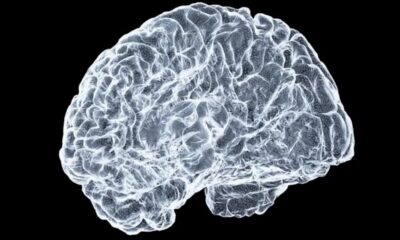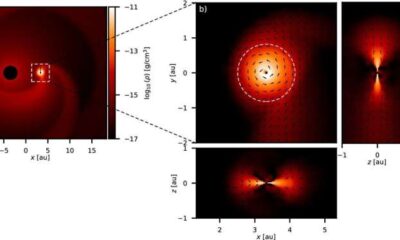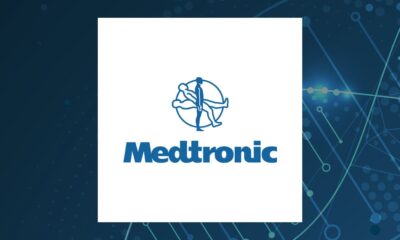Science
West Virginia Researchers Leverage AI for Rural Heart Disease Diagnosis

Researchers at West Virginia University are developing advanced artificial intelligence models aimed at improving the diagnosis and prediction of heart disease specifically for rural patients. This initiative addresses a significant gap in healthcare, as many existing AI models are predominantly based on data from urban populations, which may not accurately reflect the needs of rural communities.
Addressing Urban Bias in AI Healthcare Models
Prashnna Gyawali, an assistant professor in the Benjamin M. Statler College of Engineering and Mineral Resources at the university, emphasizes the importance of utilizing localized data. As AI technology evolves globally, much of the foundational data used in healthcare AI comes from urban settings that are often more affluent and biologically distinct from rural areas.
This inherent bias limits the effectiveness of AI in rural health systems, where healthcare infrastructure is already strained. Gyawali’s team is focusing on training a new AI model using exclusively rural patient data sourced from various regions within West Virginia. “You have to ensure your algorithms have seen the populations where you want them applied,” he stated, highlighting the necessity of tailored data for accurate diagnoses.
Potential Impact on Rural Healthcare Systems
The research team has gathered anonymous patient datasets to test different AI models on their ability to diagnose heart disease based on a variety of test results. Gyawali believes that properly functioning AI can significantly alleviate some of the burdens faced by healthcare professionals in rural areas. “Health care problems are growing and we have manpower shortages,” he noted. In West Virginia, individuals often have to travel long distances for diagnostic tests, sometimes enduring several hours of travel just to receive an initial evaluation.
Gyawali envisions a future where clinics equipped with affordable scanning devices powered by AI can facilitate early detection of heart disease, allowing for timely intervention before conditions escalate. “If we have more clinics with inexpensive scanning devices with an AI system attached, we can have an early detection system flagging certain patients,” he explained.
Despite the optimism surrounding the project, Gyawali stresses the importance of refining the AI model before it can be applied in clinical settings. The current models have only been tested on historical rural datasets and have not yet been utilized in real-world patient interactions. “Whenever we talk about safety-critical applications like health care, we need to make sure they’re reliable,” he asserted. The priority is to ensure that the AI can accurately identify patients in need of immediate care.
The ongoing development of the AI model will continue until it meets the rigorous standards required for clinical trials. While there is no set timeline for implementation, Gyawali’s team is dedicated to enhancing the model’s reliability and performance. “We’re adding more layers to ensure the model is reliable,” he remarked. The team is also exploring the possibility of validating their algorithms in clinics outside of their study to assess the model’s broader applicability.
Looking ahead, Gyawali recognizes the need for policy-level interventions to facilitate the adoption of these AI tools in clinical environments. “That’s the road map toward adopting these tools in clinics,” he concluded. The initiative not only aims to advance healthcare technology but also to ensure that rural populations receive equitable and effective medical attention.
-

 Science2 months ago
Science2 months agoOhio State Study Uncovers Brain Connectivity and Function Links
-

 Politics2 months ago
Politics2 months agoHamas Chief Stresses Disarmament Tied to Occupation’s End
-

 Science1 month ago
Science1 month agoUniversity of Hawaiʻi Joins $25.6M AI Project for Disaster Monitoring
-

 Science4 weeks ago
Science4 weeks agoALMA Discovers Companion Orbiting Giant Star π 1 Gruis
-

 Entertainment2 months ago
Entertainment2 months agoMegan Thee Stallion Exposes Alleged Online Attack by Bots
-

 Science2 months ago
Science2 months agoResearchers Challenge 200-Year-Old Physics Principle with Atomic Engines
-

 Entertainment2 months ago
Entertainment2 months agoPaloma Elsesser Shines at LA Event with Iconic Slicked-Back Bun
-

 World1 month ago
World1 month agoFDA Unveils Plan to Cut Drug Prices and Boost Biosimilars
-

 Business2 months ago
Business2 months agoMotley Fool Wealth Management Reduces Medtronic Holdings by 14.7%
-

 Science2 months ago
Science2 months agoInnovator Captures Light at 2 Billion Frames Per Second
-

 Top Stories2 months ago
Top Stories2 months agoFederal Agents Detain Driver in Addison; Protests Erupt Immediately
-

 Entertainment1 month ago
Entertainment1 month agoBeloved Artist and Community Leader Gloria Rosencrants Passes Away









